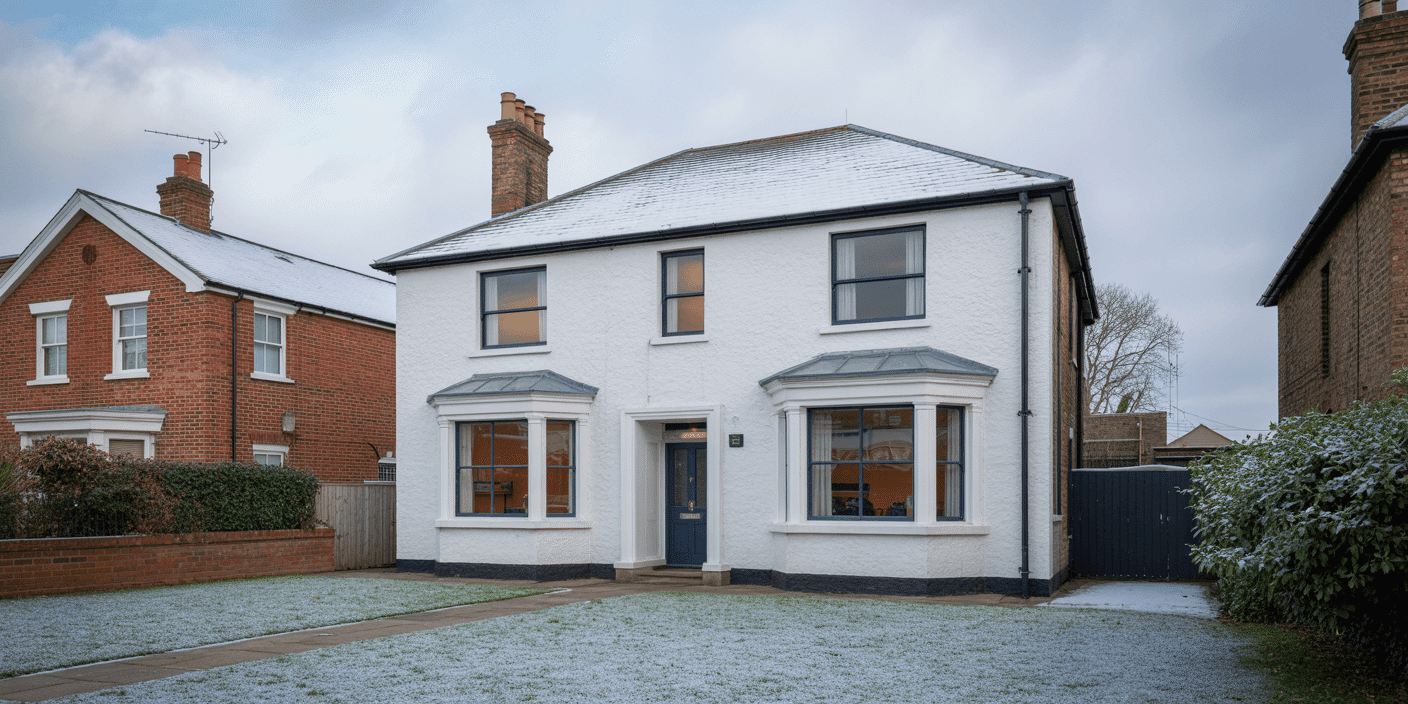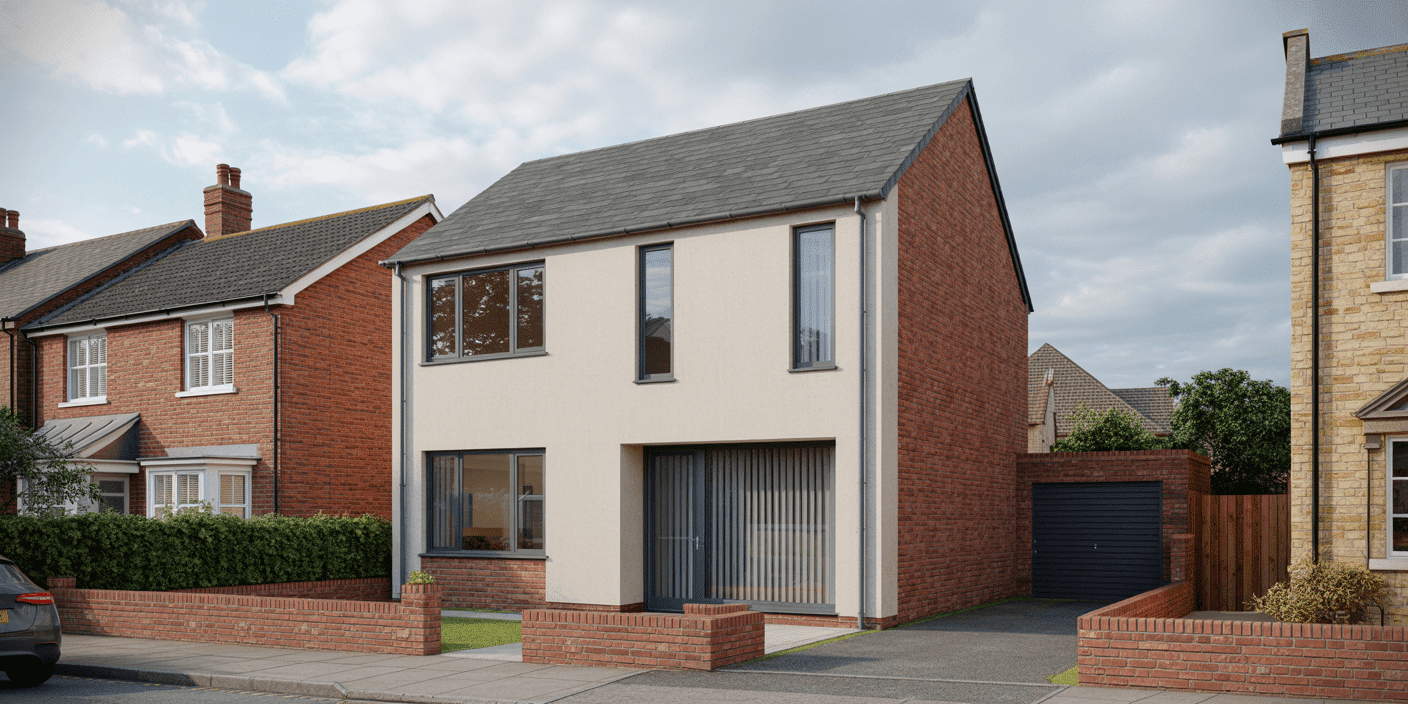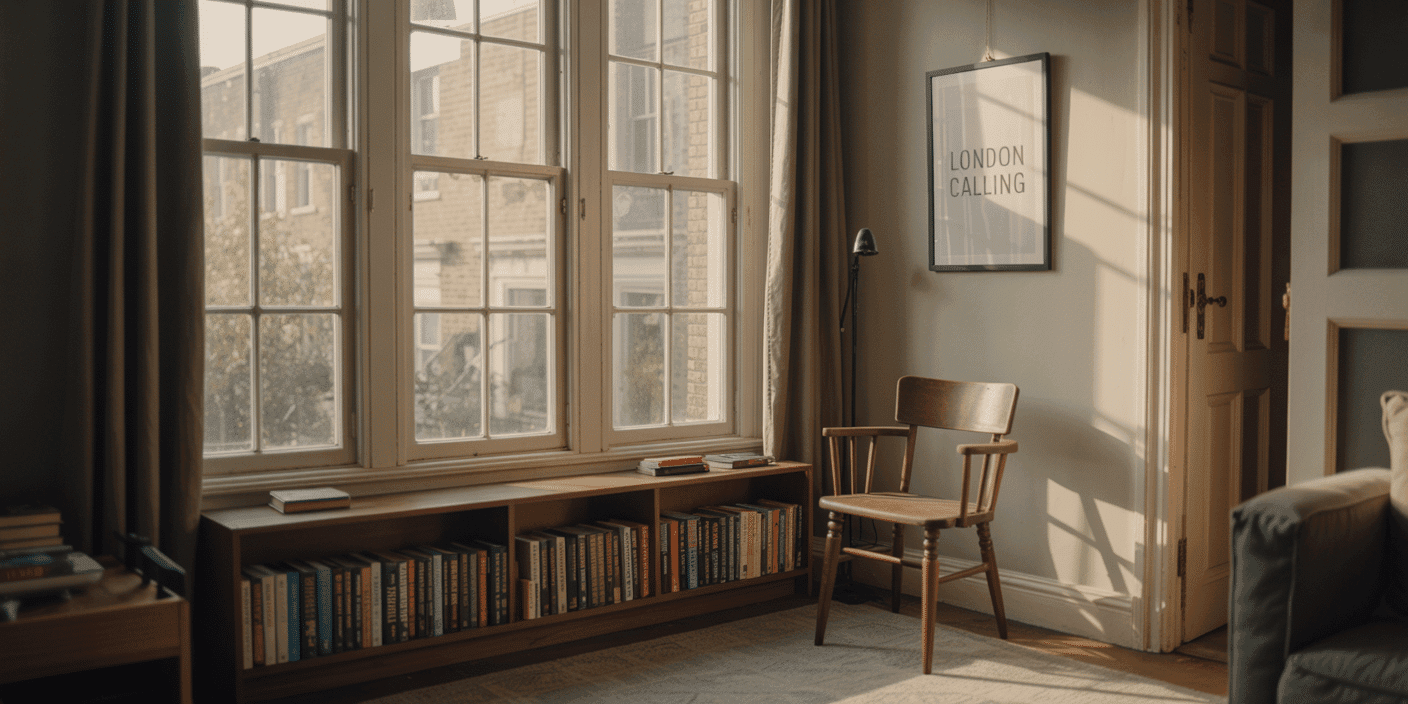The £3,000 Draught You Didn’t Know You Had
“Your windows aren’t broken. They’re simply obsolete—thermally, architecturally, and economically.”
The greatest source of energy loss in most homes isn’t the roof or the boiler. It’s the windows.
In London, the average period property can lose up to 38% of its internal heat through outdated glazing. That translates into £2,000 to £3,500 in annual energy waste—from windows that appear pristine but underperform in silence.
Even standard double-glazed units installed just a decade ago often fail to meet today’s performance standards, especially under the revised Part L building regulations.
And yet, most homeowners remain unaware—until the cold returns… or the heating bill soars.
At the heart of the issue is a single, underappreciated metric: the U-value, which measures a window’s thermal efficiency. It is the most overlooked factor in domestic architecture, and also the most financially consequential.
A low U-value doesn’t merely reduce energy bills; it determines year-round comfort, acoustic insulation, and increasingly, compliance with building control and planning departments.
To those who specialise in this field, glazing is not a cosmetic upgrade. It is a critical component of the thermal envelope—a structural barrier against loss, intrusion, and regulatory exposure.
Most homes are leaking heat invisibly. A select few firms were created to stop that loss—with precision, discretion, and permanence.
What Is a U‑Value — and Why It Matters Now
“If you can’t measure comfort, you can’t improve it.”
Before 2025, most homeowners never heard the phrase “U‑value.” Now, it’s quietly shaping everything from planning approval to resale value.
At its simplest, a U‑value measures how well a window keeps heat inside.
The lower the number, the better the insulation. It’s calculated in watts per square metre per degree Kelvin (W/m²K) — in other words, how much warmth seeps out for every degree difference between indoors and outdoors.
Here’s what those numbers actually mean:
- 2.0 – 1.6 W/m²K: the average double‑glazed unit from a decade ago — now sub‑standard.
- 1.4 W/m²K: the minimum allowed under the new Part L regulations for replacements.
- 1.0 W/m²K or below: the realm of next‑generation, passive‑ready glazing.
Why does that matter? Because every decimal point represents money, comfort, and carbon.
A window at 1.0 U‑value loses roughly 30 percent less heat than one at 1.4.
Across a full façade, that’s hundreds of pounds in annual savings — and a quieter, warmer home.
This isn’t theoretical. The UK’s Future Homes Standard will tighten these figures again by 2025, and property owners who upgrade now avoid the retrofit scramble later.
Architects are already specifying sub‑1.0 windows as the new norm; estate agents are beginning to list them as selling points.
Most glazing firms are still playing catch‑up.
A few specialists — the sort that test every unit against next‑decade standards, not last year’s minimums — are already delivering certified low U‑value systems for both period and modern properties.
That’s where experience matters. Precision in measurement becomes comfort in winter.
The Enemies of Efficiency—And Where Most Windows Fail
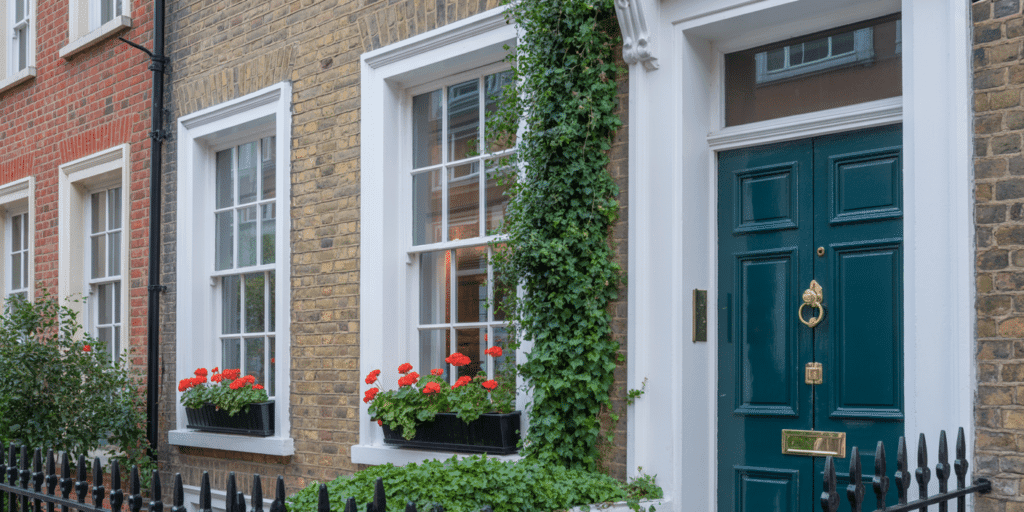
“It’s not just the wrong windows—it’s the wrong assumptions.”
Most homeowners think double glazing is enough. It isn’t—not anymore.
And many still believe heritage frames must mean compromise. They don’t.
In 2025, the true enemy of energy efficiency isn’t just a single pane of glass—it’s old thinking, outdated specs, and poor installation masked by polished aesthetics.
Let’s break the myths:
❌ Myth 1: “Double glazing means I’m covered.”
Not necessarily. While double glazing was revolutionary in the 80s, most installations today still allow for significant thermal bridging, argon gas depletion, and cold-spot condensation—especially in timber frames without thermal breaks.
❌ Myth 2: “My installer said it was efficient.”
What was efficient ten years ago may now fall well below current Part L compliance thresholds. A U-value of 2.0 W/m²K once sounded impressive—today, it’s insufficient. Worse still? Some installers use generic units that lose performance the moment they’re poorly fitted.
❌ Myth 3: “Nothing can be done with heritage windows.”
False. Advances in slimline krypton-filled glazing, Accoya retroframes, and listed-consent compliant seals mean that even Grade II properties can now exceed modern thermal benchmarks—without sacrificing their soul.
❌ Myth 4: “It’s the glass that matters most.”
Only partly true. While glazing units are important, frame technology, gas fill, and installation accuracy make or break real-world performance. A premium triple-glazed unit, poorly installed, will underperform a well-fitted heritage spec with thermal sealing.
This is where so many projects go wrong:
Beautiful windows. Expensive materials. Installed without thermal logic, compliance foresight, or measurable airtightness.
The real specialists don’t just supply windows. They design thermal envelopes.
The Top 5 Low U-Value Window Types for 2025 (Ranked)
“Five technologies leading the quiet revolution in thermal performance.”
In 2025, window design isn’t about aesthetics alone—it’s about engineering invisible performance. The best systems no longer shout with marketing hype; they whisper with results.
Below are the five window types that define the benchmark for modern efficiency—the ones chosen by those who care about long-term value, compliance, and comfort.
1. Triple-Glazed Timber-Aluminium Composite Windows
U-Value: as low as 0.8 W/m²K
Best For: premium new builds, retrofits, and modern heritage hybrids
This is the gold standard: a timber core for warmth and acoustic absorption, encased in a sleek aluminium shell for durability. The outer aluminium resists weathering, while the inner timber maintains the tactile charm of traditional joinery.
With the right gas fill and sealing, it achieves Passive House-level efficiency without the aesthetic compromise of bulkier frames.
Why it matters: This is the window type architects specify when “no excuses” is the brief.
2. Slimline Krypton-Filled Heritage Sash Windows
U-Value: 1.0–1.2 W/m²K
Best For: listed and conservation-area properties
Once, heritage meant heat loss. Not anymore. Modern sash systems now use krypton gas, a denser insulator than argon, to achieve exceptional performance within ultra-thin glazing cavities.
Combined with precision balances and draught-sealing, these windows deliver a warmer, quieter home while preserving every line of period authenticity.
Why it matters: The conservation officer sees sash. The homeowner feels serenity. The planner signs off without question.
3. Passive-Standard uPVC Tilt & Turn Windows
U-Value: 0.9–1.0 W/m²K
Best For: modern apartments, efficient family homes, and tight timelines
uPVC technology has evolved far beyond its cheap reputation. Today’s multi-chambered frames with thermal reinforcements and triple seals achieve airtightness levels once exclusive to bespoke joinery.
For developers or homeowners who prioritise speed and compliance, these units provide an excellent cost-to-performance ratio and near maintenance-free longevity.
Why it matters: When deadlines and energy targets collide, this system delivers both.
4. Aluminium + Aerogel Thermal Break Systems
U-Value: 1.0–1.2 W/m²K
Best For: contemporary architecture and large glazed areas
Lightweight, minimalist, and structurally strong—aerogel insulation technology within aluminium profiles has transformed how metal frames perform.
These systems maintain the clean sightlines modern design demands while eliminating the cold bridging problem that once made aluminium the least efficient option.
Why it matters: Architects choose aluminium for form. Engineers choose aerogel for function. Together, they create comfort that feels architectural.
5. Accoya Timber Sash with Low-E Double Glazing
U-Value: 1.2–1.4 W/m²K
Best For: traditional homes, Georgian or Edwardian refurbishments
Accoya—a chemically modified timber—resists rot, warping, and shrinkage for decades.
Paired with Low-E coated double glazing and precision draught-proofing, it offers a blend of authenticity and performance ideal for period properties seeking regulatory compliance without visual compromise.
Why it matters: The warmth of timber. The conscience of science. Built to last a generation.
Expert Perspective:
The gap between “good” and “great” glazing isn’t just in the glass—it’s in the engineering discipline behind it.
At Sash Windows London, that discipline begins at survey stage, when every millimetre is measured against compliance, comfort, and aesthetics.
Performance isn’t an add-on. It’s the philosophy.
Matching Window Type to Your Home’s Reality
“The right window isn’t just efficient—it’s appropriate.”
By now, you’ve seen what’s possible. But performance without precision leads to poor decisions.
The truth is, no single window type fits every home. Your ideal solution depends on five quiet variables:
- The age and character of your property
- Your energy goals (savings, sustainability, or silence)
- Your regulatory obligations (listed status, conservation, Part L/Q)
- Your budget (short-term vs. long-term cost of ownership)
- And—perhaps most overlooked—your personal tolerances for disruption, appearance, and maintenance
Here’s how to choose wisely.
Own a Georgian or Victorian home in a conservation area?
Best Fit: Slimline Krypton Heritage Sash or Accoya Double-Glazed Timber
- These maintain traditional sightlines, authentic profiles, and receive minimal pushback from planners
- Krypton gas allows superior insulation in narrow cavities—ideal where deep frames aren’t permitted
- Accoya is carbon-neutral, incredibly stable, and tailored for classic timber detail
Live in a modern townhouse or city flat with high energy bills?
Best Fit: Passive-Standard uPVC Tilt & Turn
- Airtightness is king here. Multi-chamber uPVC profiles and triple seals drastically reduce heat loss
- Great for soundproofing in busy areas like Zones 1–3
- Works brilliantly with smart thermostats and MVHR systems
Planning a high-spec renovation or new build?
Best Fit: Triple-Glazed Timber-Aluminium Composite or Aerogel-Aluminium
- These systems give architectural freedom with thermal clarity
- Perfect for floor-to-ceiling glazing, large openings, and energy-positive design goals
- No compromise on Part L, acoustic isolation, or longevity
Restoring a period home but want to “future-proof” it discreetly?
Best Fit: Accoya + Low-E Sash
- Ideal for phased upgrades—start with front elevation or bedrooms, expand as budget allows
- A beautiful step-change from single glazing without declaring a “renovation war” on your facade
But what if you’re not sure?
That’s the point. Every window project is unique—not because of the products, but because of the property, the personality, and the pressure points involved.
The right decision isn’t pulled from a shelf. It’s drawn from a conversation between your home, your values, and those who listen closely enough to translate both.
Compliance Is Not Optional—But Aesthetic Integrity Is Non-Negotiable
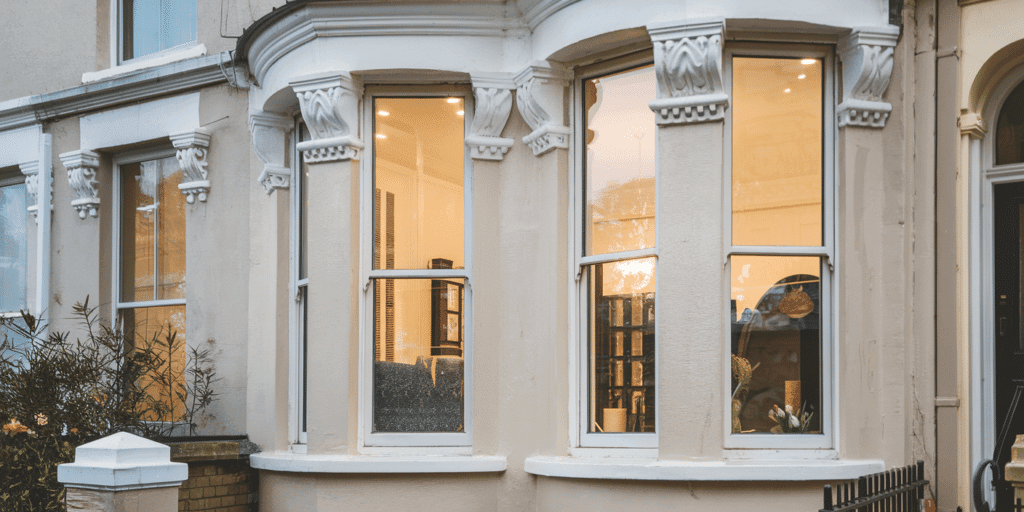
“The regulations are mandatory. The elegance is a choice. You shouldn’t have to sacrifice either.”
2025 isn’t just another year—it’s a pivot point.
New energy standards are already tightening. Planning authorities are asking for more than pretty elevations. And Part L and Part Q aren’t just theoretical—they’re being enforced, quoted, and used to delay approvals or penalise builds.
So what happens when you love your original sash windows… but need them to pass a thermal audit?
What if your renovation dreams meet a planning officer holding a clipboard?
And most critically: how do you comply without compromising what makes your home yours?
This is where most glazing companies struggle.
They can offer U-values—but not beauty.
They can offer catalogues—but not conservation fluency.
They can install, but they can’t defend a design to a planning committee.
That’s because compliance is a technical process—but it requires narrative finesse. Your proposal must:
- Satisfy Part L (energy performance)
- Align with Part Q (security in dwellings)
- Respect conservation area character (especially in boroughs like Kensington & Chelsea, Richmond, and Westminster)
- Convince both you and your planning officer that this isn’t just acceptable—it’s exceptional
The solution isn’t a compromise. It’s a craft.
At the right level of detail, the impossible becomes standard.
- Slimline krypton-filled glazing fits where older cavities restricted upgrades
- Accoya and engineered softwoods recreate period profiles with sub-1.4 U-values
- Hidden draught seals, low-iron glass, micro-laminates—all ensure authenticity without bleeding heat
These aren’t “modern” solutions pasted over traditional problems.
They’re invisible upgrades, designed with planners in mind and aesthetics at heart.
The best windows today aren’t just permitted. They’re pre-approved by logic.
“A planning officer doesn’t need convincing.
They need proof. They need performance.
They need a proposal that feels like it came from someone who lives in this city—someone who knows the difference between meeting a regulation and respecting a building’s soul.”
That someone exists. But they don’t come with a price list. They come with questions, site surveys, and joiners who still measure in fractions.
What Happens If You Wait? The Cost of Delay
“Indecision is costing more than installation.”
For many homeowners, replacing windows feels like a job for later. After the extension. After the garden. After the boiler breaks again.
But here’s the quiet truth:
The cost of waiting compounds—financially, legally, thermally.
Every winter you delay is a penalty you pay.
On a typical London property with inefficient glazing, you could lose £2,000–£3,500 per year in heat loss.
Even a 3-month delay in install means you burn through hundreds in avoidable bills—money that could’ve paid for a portion of your upgrade.
And that’s just energy. Delays also expose you to:
- Non-compliance risks (as new Part L & Part Q regs tighten)
- Missed planning application windows (especially in conservation areas)
- Contractor scheduling bottlenecks (top joiners and installers book 2–6 months out)
- Inflation on materials and lead times (especially on specialist glazing components)
- Insurance complications (as more policies require energy efficiency disclosures)
The psychological tax is real, too.
- Living through another draughty winter in a high-value home doesn’t feel luxurious
- Delays strain relationships with architects, contractors, even neighbours
- Worst of all, you lose the peace of completion—the quiet satisfaction of work that’s done right, early, and once
The cost of doing nothing is rarely nothing. It’s just harder to measure.
Those who took action in spring will enter winter warm, quiet, and compliant.
Those still waiting will be paying for a past they didn’t fix—when they could’ve been building for the next decade instead.
“Thermal upgrades aren’t just energy-saving decisions.
They’re timeline resets. They return control to you—before the market, the planner, or the weather dictates what must be done.”
The Quietest Call to Action You’ll Ever Hear
“When you know what’s leaking, you can stop it. Quietly. Permanently.”
You don’t need a sales pitch.
You’ve read the data. You’ve seen the systems. You’ve started asking the right questions.
Now comes the part most people rush—the part where the wrong glazing is chosen because a discount was ending, or because a tradesman said “they’re all basically the same.”
But you’re not “most people.”
You own a home with history, with integrity, with promise.
And you want glazing that respects that—technically, aesthetically, legally.
So here’s our quiet offer:
We’ll visit. We’ll listen.
We’ll survey your home—not with a catalogue, but with a compliance lens, a conservation mindset, and the obsessive eye of a joiner who understands how heat actually escapes.
We’ll show you what’s leaking, why it matters, and what’s possible—whether you choose us, or simply want clarity.
No pressure. No noise. Just a thermal blueprint tailored to your walls, your windows, and your future.
Book Your Thermal Review with Sash Windows London
Discreet. Technical. Aesthetic-first. Regulation-ready.
It’s not just an appointment.
It’s the first step in reclaiming the quiet, warm, compliant home you already thought you had.
